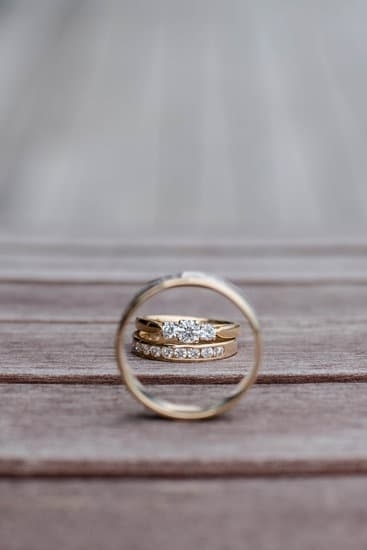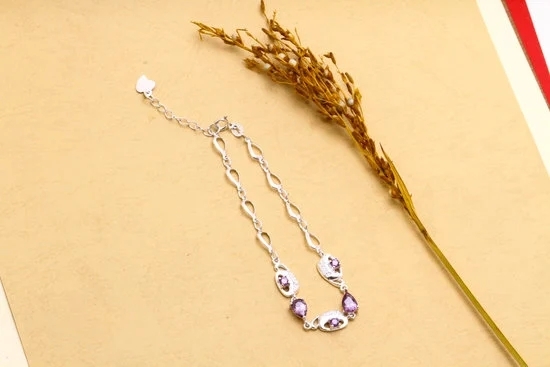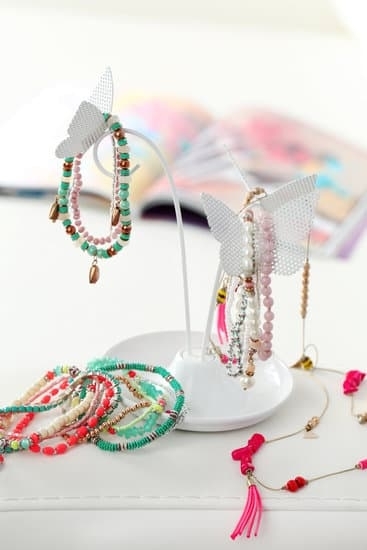Cameo jewelry is a timeless classic with a long and storied history. This type of jewelry has been around for centuries, ever since the ancient Greeks carved cameos from gemstones and seashells. Even though cameo jewelry from the Victorian era is an attractive statement piece, they also play an important role in defining fashion during that period.
The Victorians were passionate about ornamental accessories, making them begin to produce more affordable versions of cameo jewelry out of base metals or inexpensive materials such as paper mâché. This allowed people of all social classes to own one or more pieces of this eye-catching jewelry that had been traditionally reserved only for royalty or the very wealthy.
During these times, it was customary for women to wear Cameos as part of their evening wear attire as a sign that they belonged in high society and could afford to upkeep these traditions.
Many cameo pieces have strong ties with the Victorian era due to its popularity and cultural influence during this time period. There is a wide variety for potential buyers to choose from, ranging from brooches to necklaces and rings with intricately carved designs featuring portraits, landscapes, flowers, animals or mythical characters.
No matter what type of design you prefer, owning a genuine piece of Victorian era Cameo Jewelry will provide you with a valuable insight into past fashions and trends as well as give you something unique to pass on as an heirloom item down through generations if you choose too.
Evolution of Cameo Jewelry Throughout the Victorian Era
The evolution of cameo jewelry throughout the Victorian Era was quite remarkable. Before the mid-19th century, cameos resembled sculptures with a raised profile portrait on flat stone. They were completely made by hand, painstakingly carved from semi-precious stones such as lava and agate.
By the middle of the Victorian Era, carving techniques had become so advanced that more sophisticated designs began to emerge. The profiles were still cut into the stone but more ornamental detail, often with delicate scrollwork or floral banding around the portrait, was added to make them even more eye-catching and special.
This new trend created a demand for somewhat lighter and cheaper materials such as shell and ivory (not elephant ivory). Softer materials tend to be easier to carve, especially when smaller items are involved, so this was great news for anyone looking for something daintier or less expensive.
Shell can come in a range of colors and patterns and this type of cameo is generally considered quite valuable due to its rarity; it is no wonder that they were so popular in Victorian society.
The most highly sought after cameo jewelry though was made using hardstone gems such as onyx and chalcedony; anything from rings, necklaces and brooches could be crafted from this material with intricate carvings creating exquisite works of art. Some examples feature detailed images deeply carved into a dark background which makes them truly stand out in any collection.
Sometimes these pieces would also be set with precious stones for additional sparkle – sometimes rubies or diamonds. These items in particular are currently highly sought after by collectors – especially those from within Royal collections.
Types & Styles of Cameo Jewelry from the Victorian Era
The Victorian Era was a time of creativity and progress. Not only were new building and development projects being constructed, but there was also a new-found enthusiasm for fashion and accessories. Among the must-have adornments of the period were cameo jewelry, elaborate creations featuring recurring motifs of flowers, shells, women’s portraits and mythical creatures.
The popularity of these intricate pieces really dates back to the 15th century where master carvers would create intricate scenes out of semi-precious stones, like agate and onyx. The appeal soon grew and took off during the Victorian Era, making cameo jewelry some of the most sought after accessories among women at that time.
While they could be made out of a variety of different materials such as shell or coral, it was more common for carvings to be done from off-white shells rather than from harder minerals. This gentle ivory color set against a contrasting dark background created beautiful portraitures in profile with subtle shadows adding an extra layer to each piece.
In terms of design styles during this era, profiles featuring romanticized Victorian women wearing frilly gowns or diadem’s across their foreheads were especially popular, allowing for beautifully rendered curls around their faces and necks. Alongside these classical settings came more creative artworks which incorporated Hercules figures as well as mysterious mermaids inlaid with shining yellow gold or bold colorful enamel highlights providing an extra touch of glamor to each product.
Jewellery makers also played cleverly with materials such as agate to produce picturesque landscapes otherworldly creatures alongside floral settings that surrounded central figures inlaid with precious stones accents such as rubies or sapphires giving them added depth color dimensionality.
Victorian cameo jewelry pieces remain both treasured items on display at exhibitions as well as sought after antique pieces by collectors around the world thanks to their careful craftsmanship combined with thoughtful symbolism forming an object to admire throughout the ages.
Social Implications of Wearing Cameo Jewelry in the Victorian Era
The wearing of cameo jewelry had great social implications in the Victorian Era. It was used to portray a variety of themes, such as fashion and status. Cameos were usually expensive jewelry pieces crafted by an artisan and featured a carved relief typically made from shell or agate depicting historical figures, portraits or classical mythology scenes.
Classy women who could afford these luxurious items at the time showed off their status through these impressive pieces of art. Wearing cameo jewelry highlighted a woman’s achievements in her social circle and conveyed her knowledge of the world’s history through its intricate designs.
In the late Victorian Era, having cameo jewelry was also a symbol of marriage prospects for young women. Men gifted their wives or future wives with exquisite carved cameos to express their commitment and love for them, making this type jewelry even more desirable among fashionable members of society.
After all, it was through these scenic designs in stone that one could fully appreciate the beauty and attention to detail that went into creating each unique piece. Women also enjoyed showing off these attractive items as part of their accessory collection whenever they attended formal gatherings such as luncheons or dances.
The presence of cameos remained highly admired during the Victorian reign mostly because people at this time had access to new technologies which allowed them to produce superior quality pieces more efficiently than ever before. With advancements in engraving tools and scientific research enable artisans to craft gorgeous images onto the stones with greater precision than ever before, making cameos accessible to but more socially affluent members of society due to their costs.
As a consequence, many wealthy aristocrats began wearing cameo jewelry on a regular basis as part of their daily lifestyle which further increased public awareness and popularity towards this type jewelry during this time period.
Popularity & Demand for Cameo Jewelry During the Victorian Era
The mid-Victorian era was a period during the 19th century where the popularity of cameo jewelry was at its peak. Women wore an abundance of these intricate pieces of art, as they were considered to be a symbol of wealth and sophistication. Cameos featured refined works of art on semiprecious stones that depicted scenes from Greek and Roman mythology along with some portraits.
The complex designs ensured that no two cameos were alike, making them highly coveted by women from this era. Furthermore, when it came to craftsmanship, a cameo’s appearance relied heavily on the skill and creativity of its artist. As such, these meticulous pieces were often priced quite high due to the amount of time and effort involved to create them.
Materials Utilized to Craft Cameo Jewelry
During the Victorian Era, common materials used in crafting cameo jewelry included semi-precious gemstones such as agate, onyx, coral and shell. Agate was one of the most popular options as it held an exciting array of attractive hues along with subtle striations which formed patterns throughout it. Onyx had also been used since ancient times due to its smooth texture as well as bold black hue.
Moreover, coral could be provided in various shades such as pink or even blue depending on its source country. Meanwhile shells such as ammonites or nautiluses are popular for their unique shapes and markings which allowed for more detailed carvings that range from simple outlines to elaborate depictions of deities and people from Greek mythology or royalty figures from Renaissance Italy.
Cameo Jewelry in Today’s Era
Today many brands still utilize Victorian-style designs while creating contemporary jewellery inspired by this era’s coveted cameos with updated materials made from gold caps and stencils instead of shells making it possible for users to come up with far more intricate masterpiece designs than ever before.
Additionally , some modern designs opt for synthetic stones rather than natural gemstones so that people are able to choose between conventional placements for cameo setting pieces like pendants earrings necklaces bracelets or even cufflinks.
A wide range of customization options allow consumers today not only emulate classic Victorian styling but also customize their own unique piece with modern motifs ranging from animals abstract shapes geometric designs text messages.etc.
Famous People & Royal Families Who Wore Cameo Jewelry
Cameo jewelry was especially widespread during the Victorian Era, with an array of famous people and royal families wearing it to add a unique touch to their ensembles. From dramatic statement necklaces to exquisite pendants, these pieces of jewelry made an impression at every societal affair throughout the era.
Queen Victoria herself was an avid wearer of cameo jewelry and wore them in signature styles. Of note was a gorgeous blue onyx cameo necklace featuring a profile view of her beloved husband, Prince Albert. This scene was also noted many times in portraits that were painted of her while she was alive. Furthermore, Queen Victoria’s daughter Princess Alice even minted her own coinage based around a cameos design featuring the profile view of both his parents.
At social events through this period, cameos were worn by stars of the day such as Mark Twain, Robert Browning and Dante Gabriel Rossetti who were known for their love of the style. Each piece’s intricacy helped to capture not just its owners style but also their character too – making these cames extremely popular amongst social circles in the Victorian era.
This meant that wherever one went there would be cameos artfully displayed to show off the unique personalities throughout high society – allowing people from all walks-of-life to express themselves through this special form of jewelry.
Crafting Techniques & Popular Materials for Cameo Jewelry
The making of cameo jewelry from the Victorian era involved intricate techniques and an array of materials, both commonly used and unique. During that period, the skillful artisans would employ intaglio as well as relief-cut stylings to form attractive pieces from shell, hardstones such as carnelian and agate, lava and mineral camstone. Each stone was chosen based on the stone’s natural nuances – its striations and design inclusions, color hues and lustrous appearance.
The craftsmanship relied heavily on lapidary processes to chisel thesematerials into rectangular or circular shapes thin enough to be etched or hollowed out by hand. Specialized tools such as pincers, gravers and drills were then utilized to inscribe details in the stones’ faces, featuring masterfully-executed scenes that ranged from romantic imagery or historical figures to mythical creatures and seasonal motifs; additional cuts may have been included for aesthetic purposes or signature makers’ requirements.
In post-Victorian times, advances in technology led to more efficient ways of crafting this iconic jewelry type. However, for antique collectors today who wish to gaze upon a genuine cameo piece crafted during the era when Queen Victoria ruled England can still find great finds at flea markets, estate sales or auctions both online or brick & mortar – all steeped in high regard for aesthetics and skilled labor.
Cameos are one of the most beloved gems for collectors who appreciate its antiquity valueand symbolic implications that could transcend generation upon generation still graced with beauty.
Summary & Reflection on the Lasting Legacy of Cameo Jewelry
The Victorian Era from 1837-1901 is perhaps most well known for its romanticized view of beauty and love as seen in fashion, literature, and artwork. During this time period, cameo jewelry had become incredibly popular with women who sought to emphasize their innate beauty while adorning themselves with delicate pieces that expressed their emotions.
This legacy of style has maintained its appeal even today, as many people around the world still value the unique elegance of a cameo necklace or pin.
The art of carving cameos dates back to Ancient Greece and Rome but it was during the Victorian era when they gained much more popularity among fashionable ladies. There are two types of cameos typically carved into jewelry pieces: a relief carving which stands high against the background and an intaglio, which is concave or sunken into the jewel’s surface.
One wonderful thing about cameos is that anyone can have them custom-made based on their preferences so that a piece may be shaped and decorated to perfectly suit an individual’s style. Combined with intricate handcraftsmanship and intricate detailing, cameo jewelry from this era offer an undeniable sense of timelessness, elegance and antiquity.
Cameo jewelry has left behind a truly lasting legacy due in part to its popularity during Victorian times. Even now these jewels are synonymous with sophisticated style; designed exquisitely and crafted by skilled artisans who remain highly sought after today.
They are often viewed as collectible items, being treasured by families through successive generations or being auctioned off in high-end auctions all over the world. Not only do they fetch participants high prices but they also help preserve a legendary era in history that continuously inspires our current aesthetic sensibilities today.

Welcome to my jewelry blog! My name is Sarah and I am the owner of this blog.
I love making jewelry and sharing my creations with others.
So whether you’re someone who loves wearing jewelry yourself or simply enjoys learning about it, be sure to check out my blog for insightful posts on everything related to this exciting topic!





